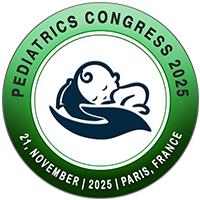
Lidija Banjac
Institute for Children's Diseases, MontenegroPresentation Title:
Duodenal Atresia with Apple-peel Intestinal Atresia: a Case with Favorable Outcome
Abstract
Purpose
− Duodenal
atresia with apple-peel intestinal atresia remains a difficult and complex
condition, even with advances in medical and surgical therapies. Due to the
significant difference in etiology, the association between these two types of
atresia is very rare and is associated with a high rate of mortality. Only
twelve of these cases have been described so far in English literature, most
often with a poor outcome. This study aims to report a case of this complex
condition, highlighting the diagnostic approach, management strategies, and
favorable outcomes.
Methods: A case of a neonate diagnosed with duodenal atresia and
associated apple-peel intestinal atresia was evaluated at our institution. The
clinical presentation, imaging studies, and surgical approach were carefully
documented. The neonate underwent prompt surgical intervention and post-operative
care.
Results
− We
present a premature infant in whom intestinal atresia was suspected prenatally.
On the first day of life, based on clinical, radiographic and ultrasound
examination, suspicion was confirmed and surgical intervention was performed.
It was discovered that the proximal part of the duodenum blindly ends with a
large dilation. The proximal jejunum also ends blindly and the distal small
intestine wraps around a single mesenteric vessel in a spiral fashion
reminiscent of an “apple-peel.” At the first operation, a double enterostomy
was performed. In the second operation, the continuity of the digestive
intestine was established by end-to-end duodeno-jejunal anastomosis. The
patient had a favorable post-operative recovery, with complete resolution of
gastrointestinal symptoms. Follow-up assessments at 6 months demonstrated no
signs of recurrence or additional complications.
Conclusion − This case highlights the importance of early diagnosis and
timely surgical intervention in managing rare congenital anomalies, even in
cases involving these rare combined defects. Multidisciplinary care and close
post-operative monitoring are essential for optimal recovery.
Biography
TO BE UPDATED SOON

